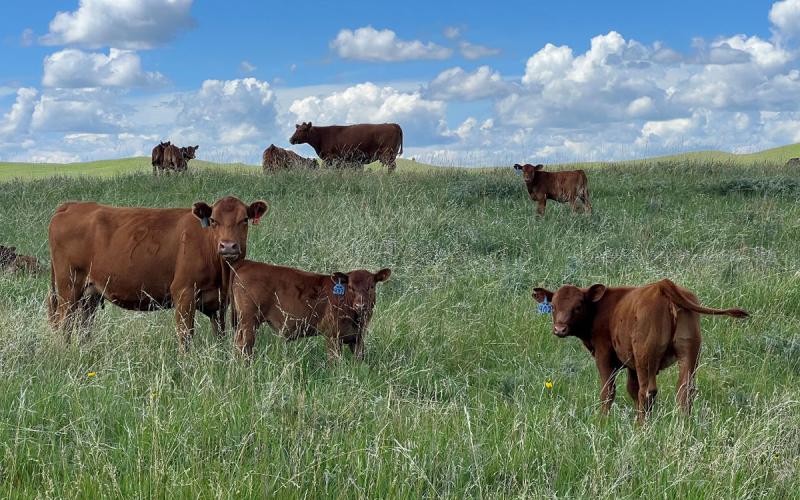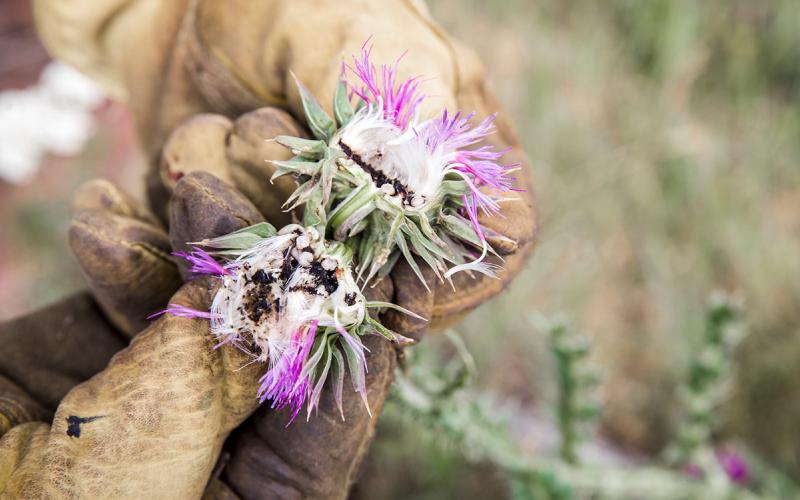Yellow toadflax is a short-lived perennial plant that infests pasture and rangeland. If not controlled, yellow toadflax can displace native plant species and increase the potential for soil erosion, as well as surface run-off. Grass productivity can be reduced significantly in areas infested by yellow toadflax. Yellow toadflax germinates in the spring and begins to flower in the late summer (Figure 1).

Management Tactics
Yellow toadflax is difficult to control, so management tactics should be implemented early and often.
Bio-control
- Some insects can provide control of toadflax species, but yellow toadflax is not effectively controlled with insects.
Chemical
- Yellow toadflax control with herbicides is best when plants are flowering. Effective herbicides include picloram, chlorsulfuron, and metsulfuron (the listed herbicide active ingredients are sold under various tradenames).
- Areas infested with yellow toadflax likely will have to be repeatedly treated to achieve effective control.
Cultural
- Pastures and rangelands should be properly managed to avoid yellow toadflax infestations. Proper fertilization can increase the vigor of desirable plants and exert more competition on young yellow toadflax plants. Avoid overgrazing, as yellow toadflax can germinate and colonize more efficiently if the presence of desirable plants is minimal. Buying and selling hay contaminated with yellow toadflax can result in the introduction of the weed to non-infested areas. Consideration and inspection should be exercised when buying or selling hay from areas with an infestation of yellow toadflax.
- Burnings will not effectively control yellow toadflax, but they can facilitate the colonization of yellow toadflax since the density of desirable plants will be reduced. However, burnings can be implemented with an herbicide application to increase control, as more plants will likely be present in recently burned areas. However, the herbicides need to be applied timely, so the plants do not produce viable seeds.
Mechanical/Grazing
- Mowing can be effective, but mowing must be implemented frequently, which could negatively impact desirable plants within the infested area. Hand removal is effective on small plants, but this tactic is likely only feasible on small, isolated areas of yellow toadflax.
- While not palatable to cattle, goats and sheep will graze on yellow toadflax. Animals should be confined before moving to non-infested pastures to ensure that any viable seeds have been processed through the animal’s digestive system.

